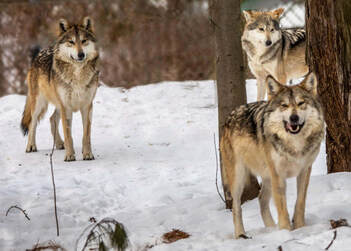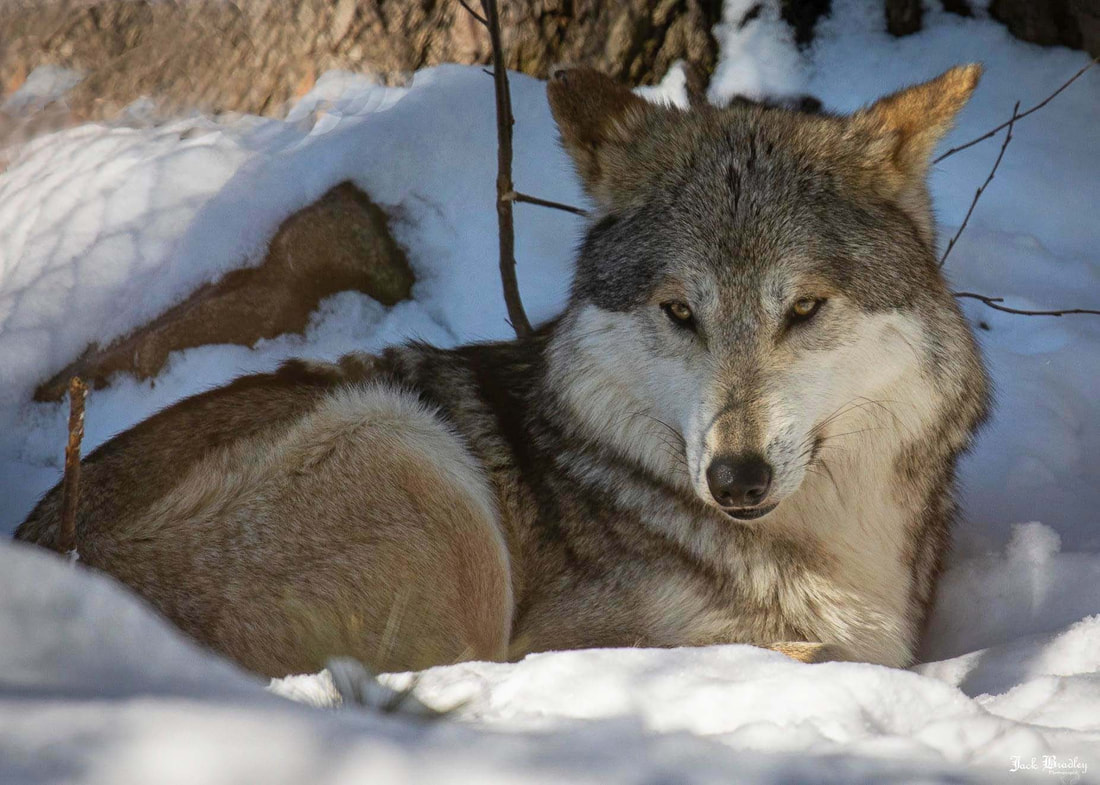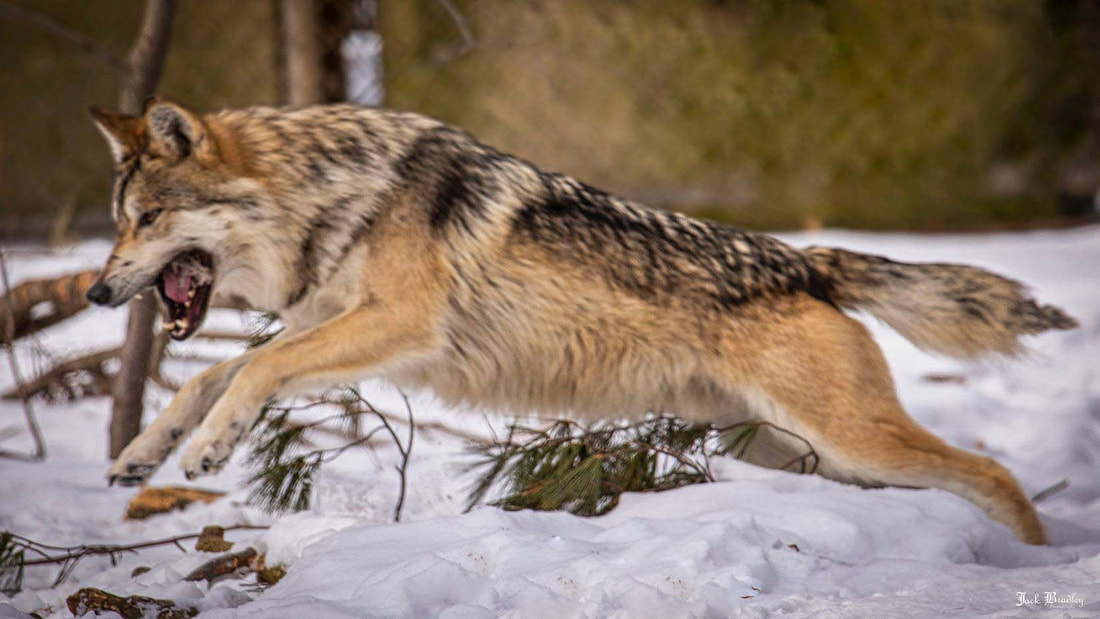Mexican Wolf (Canis lupus baileyi)
|
Physical Description: Mexican Wolves are the smallest subspecies of the Gray Wolf. They weigh between 60 and 90 pounds and stand 2-3 feet tall. The Mexican Wolf is 4 to 5 feet long on average, or about the same size as adult German Shepherds. They have sleek bodies and long legs. They have large ears and a powerful sense of smell, both of which aid in hunting their prey.
Although they are also called the Mexican Gray Wolf, they are not completely gray. Their fur is a mixture of gray, cream, black and rust colors. Their mottled fur provides excellent camouflage. Mexican wolves may travel 30 miles in a day while searching for food or patrolling territory. For long distances they can trot at five miles per hour. They can also sprint for short distances up to 35 miles per hour. Habitat: The live in mountain forests and grasslands. They will live in caves, under tree roots and rock ledges, or will enlarge abandoned burrows from other animals. Range: The Mexican Wolf can be found in the wild in the United States of America in Arizona and New Mexico, and in northern Mexico. Diet: They are carnivores who will eat small mammals like rabbits and larger animals like elk and deer. They hunt as a pack and may chase their prey a long distance before catching and killing it. Lifespan: They live on average 8 years in the wild and 16 in human care. Social Structure: Mexican Wolves are sociable animals within their packs. Each pack consists of 3 to 30 individuals and is led by an alpha male and female and the rest of the pack operates like an extended family. Only the alpha pair breeds. Packs rarely meet and stay within their territory. A pack’s territory is defined by scent marking and howling. Within the pack they communicate with body postures, facial expressions, barks, howls, whimpers and growls. Alpha wolves are monogamous. The alpha female gives birth to a litter of 4 to 7 pups in the spring in a burrowed-out den. The whole pack helps feed the pups by regurgitating food. Pups are weaned by five weeks. Status: The Mexican Wolf is listed as endangered under the United States of America Endangered Species Act1. Other: Connecticut’s Beardsley Zoo is home to a pack of Mexican Wolves. The members of our pack include two males born in 2017 named Tipper and Marco and one female born in 2016 named Pika. It is a non-breeding pack. 1 https://www.fws.gov/program/conserving-mexican-wolf |









